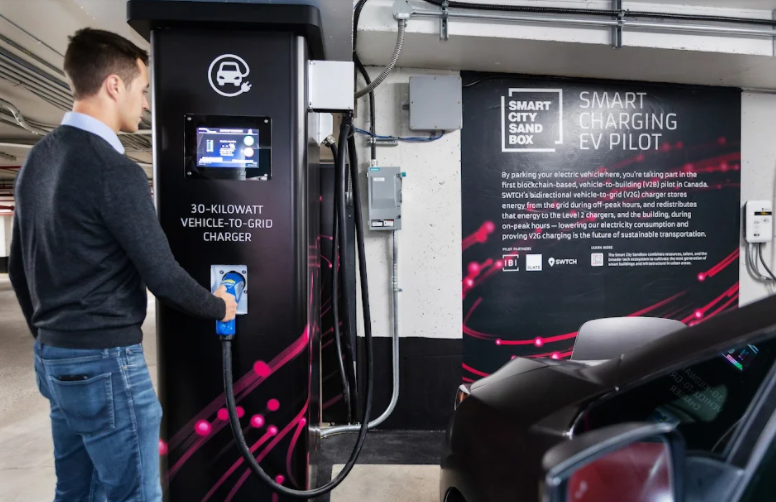
 Canadian Electric Vehicle-To-Grid Project Uses BlockchainElectric vehicles have a number of benefits that gas-powered ones do not. To name just a few, they have zero direct toxic emissions, they produce very little road noise, they have fewer moving parts that need replacement or repairs, and in some cases their batteries can be re-purposed for second life use in stationary energy storage products. Another advantage is vehicle-to-grid technology (V2G), which allows plugged-in EVs to draw electricity from the grid and they can also send it back.
Canadian Electric Vehicle-To-Grid Project Uses BlockchainElectric vehicles have a number of benefits that gas-powered ones do not. To name just a few, they have zero direct toxic emissions, they produce very little road noise, they have fewer moving parts that need replacement or repairs, and in some cases their batteries can be re-purposed for second life use in stationary energy storage products. Another advantage is vehicle-to-grid technology (V2G), which allows plugged-in EVs to draw electricity from the grid and they can also send it back.In Canada, a V2G project is using a Nissan Leaf connected to a technology platform created by SWTCH that allows electricity to flow from the Leaf’s battery to a multi-tenant building. SWTCH’s CEO, Carter Li, answered some questions about the project for CleanTechnica.
Why is the SWTCH blockchain-based, EV-to-Building pilot being conducted?
The three-year pilot demonstrates how commercial and multi-family building operators can accommodate the growing demand for EV charging stations while simultaneously improving the building’s energy efficiency and reducing building operational costs. Leveraging SWTCH’s bidirectional, vehicle-to-grid (V2G) charging technology, our pilot will explore viability of vehicle-to-grid charging technology in high-density multi-tenant buildings to store energy using EVs during off-peak hours and redistribute that energy to the building and other uni-directional EV chargers during on-peak hours. The technology and model developed by SWTCH is unique as it includes a financial incentive structure for EV owners to participate in the program which leverages blockchain technology. The SWTCH platform tracks when energy is being discharged from an EVs battery and when it’s being charged, creating a history of credits and debits securely managed through a third-party distributed ledger system that participants can monitor using their smartphones.
What are the pilot project goals?
The clean energy pilot aims to improve the electric vehicle (EV) charging access in high-density buildings by addressing the barriers to deploying EV charging infrastructure within the built environment by creating an energy distribution business model that benefits both building operators and EV owners. As electric vehicles gain popularity and adoption, the question of how to accommodate a rise in EV charging infrastructure without additional strain on building electrical infrastructure and the electrical grid becomes increasingly relevant. Vehicle-to-grid technology allows buildings to draw energy from EVs during on-peak hours rather than the grid. During the pilot, the V2G-enabled EVs will store energy during off-peak hours and redistribute that energy to the building and the EV chargers in use, creating an energy flow that is cost-effective and environmentally sustainable. The project also employs bi-directional V2G DCFC charging stations, smart unidirectional Level 2 AC charging stations, and stationary battery energy storage systems as distribute energy resource assets for demand response, peak shaving, and peer-to-peer energy trading purposes.
https://www.civilengineering.ai/canadian-electric-vehicle-to-grid-project-uses-blockchain/

Post a Comment